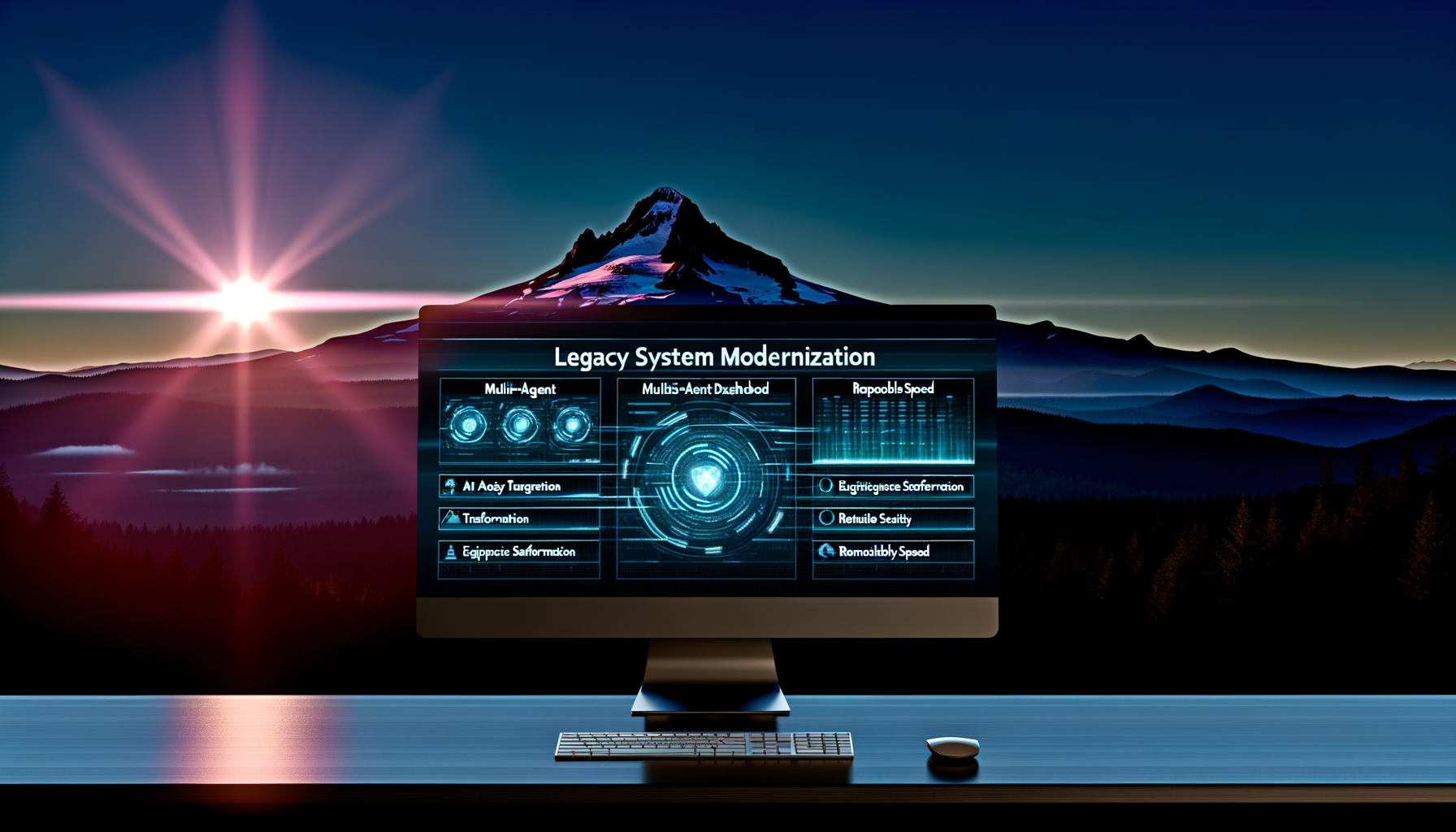Are your legacy systems holding your growth hostage? In 2023, businesses are losing up to 30% of their potential revenue due to outdated infrastructure (Gartner, 2023). In this article, we explore the transformative journey from monolithic systems to a nimble, AI-integrated future that enhances scalability, security, and innovation.
The Case for Legacy Modernization
Why Now is the Time
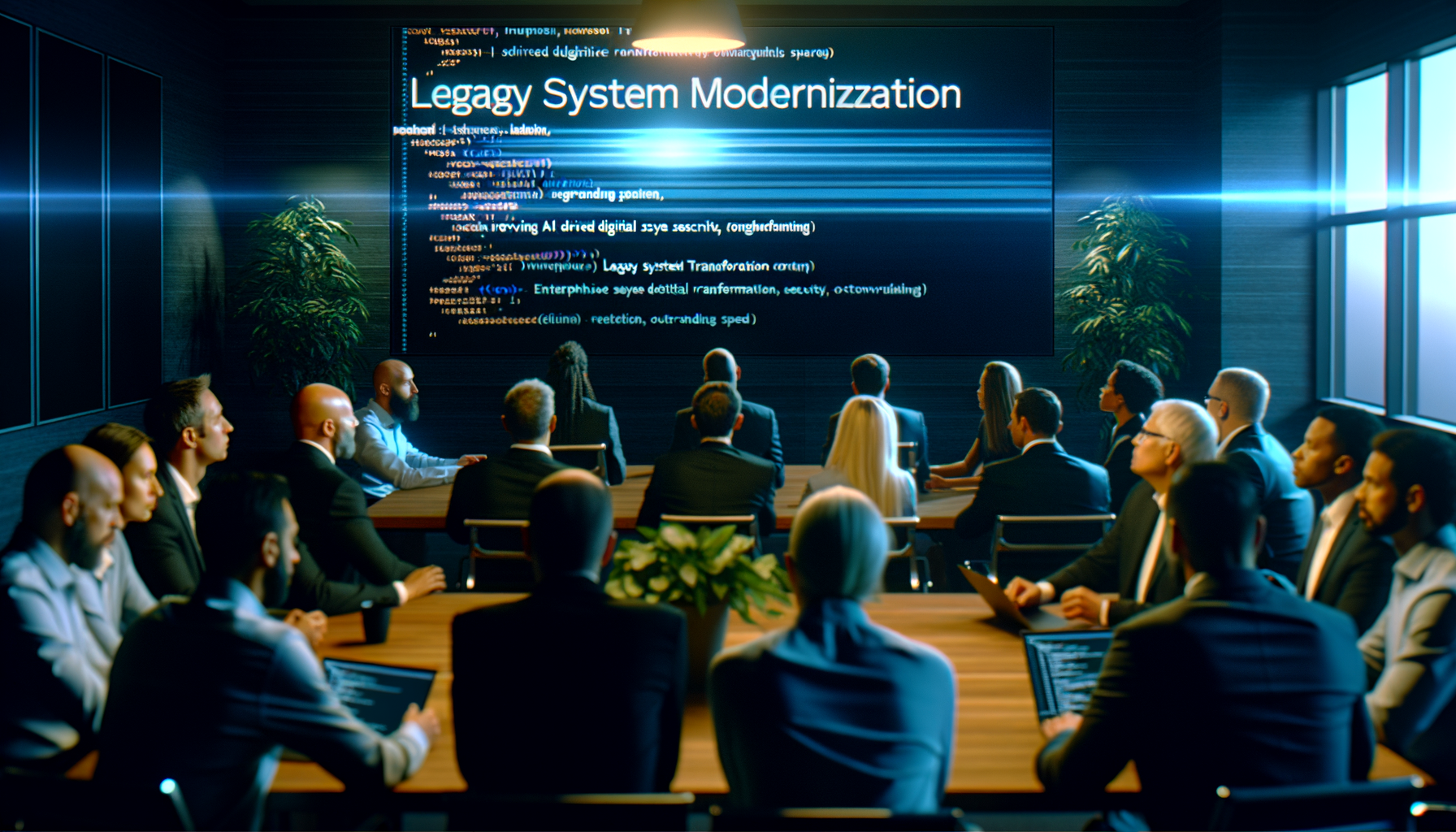
Collaboration between tech leaders reviewing legacy system code.
As the pace of digital transformation accelerates, clinging to legacy systems can be akin to navigating with a compass in a GPS world. The key drivers for modernization today include scalability demands, security vulnerabilities, and the imperative to leverage AI for competitive advantage.
Legacy systems, often built decades ago, struggle to integrate with modern technologies. This mismatch not only hampers operational efficiency but also inflates costs significantly due to maintenance and security risks.
Moreover, with newer generations of talent entering the workforce, the familiarity and expertise with these dated systems are dwindling, creating a talent gap that further complicates matters.
LIST
- •Scalability Demands
- •Security Vulnerabilities
- •AI and Competitive Advantage
Step-by-Step Modernization Framework
Practical Steps for Success
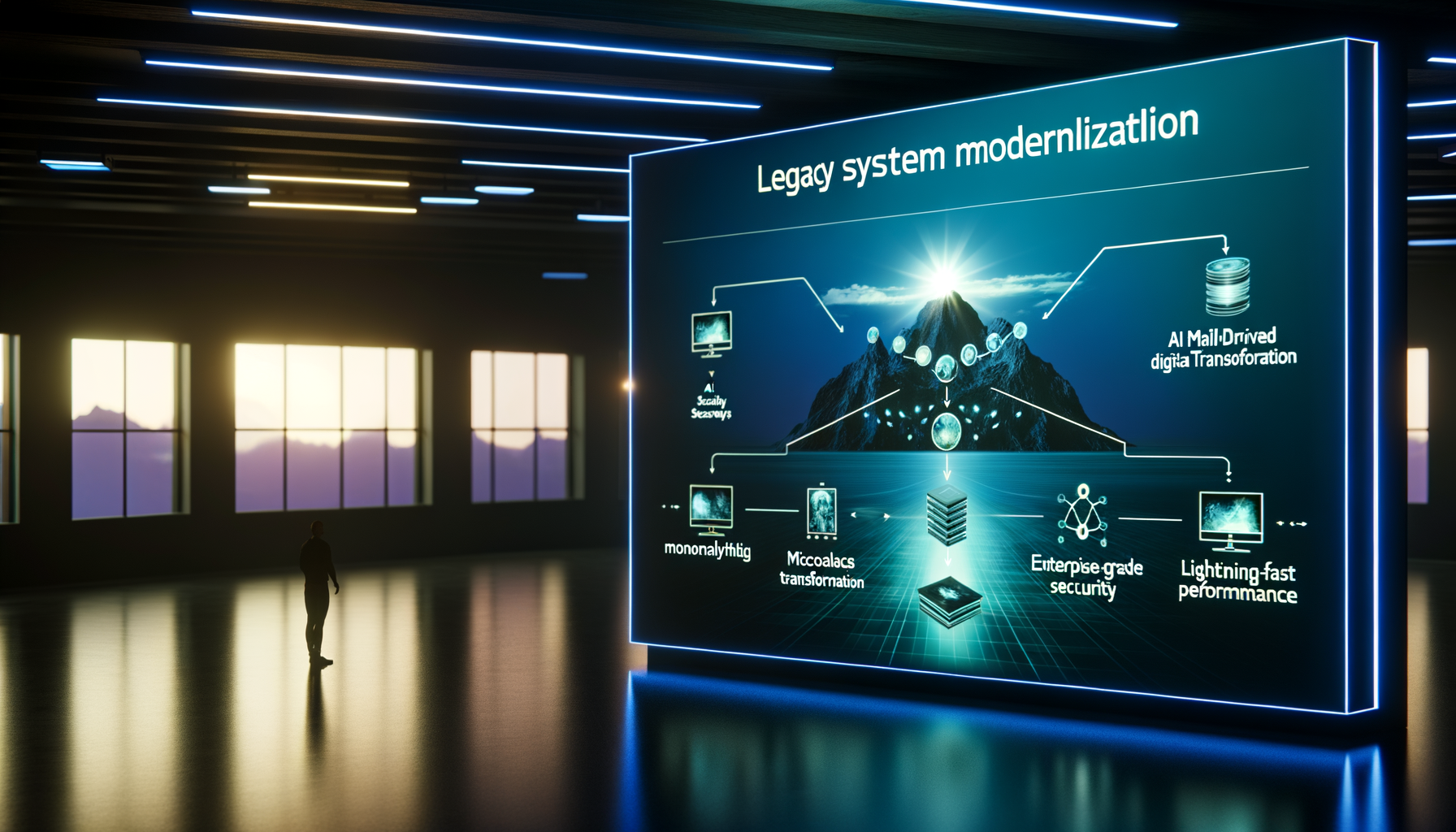
Diagram illustrating monolith to microservices transformation.
Modernizing legacy systems doesn’t happen overnight. It requires a strategic roadmap tailored to your organization's unique needs. Here’s a streamlined framework to guide your transformation journey:
1. **Assessment and Planning**: Conduct a thorough audit of existing systems to identify critical bottlenecks and opportunities for improvement.
2. **Architecture Redesign**: Transition from monolith to microservices architecture to improve modularity and scalability.
3. **Implementation and Testing**: Leverage agile methodologies to iteratively develop and test new components, ensuring seamless integration.
4. **Deployment and Monitoring**: Roll out changes incrementally to minimize disruption, and establish robust monitoring to track performance and user feedback.
CALLOUT
Remember, modernization is a marathon, not a sprint. Careful planning and phased execution are key.
Integrating AI for Seamless Transformation
Leveraging Machine Learning
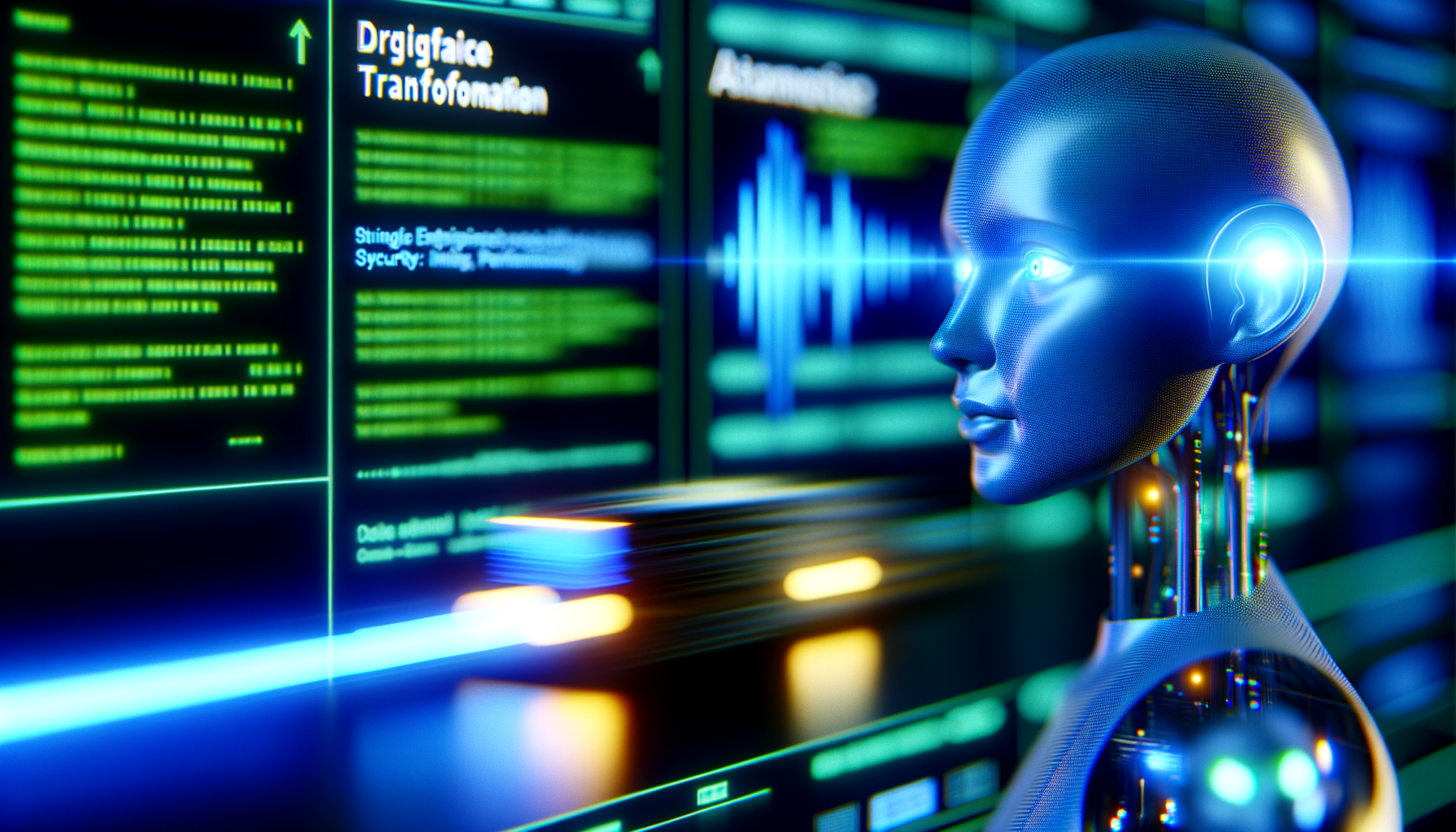
AI model analyzing legacy system data.
AI and machine learning are game-changers in the realm of legacy modernization. They can automate mundane tasks, predict system failures before they occur, and even optimize operations in real-time.
By incorporating AI, businesses can transform data into insights, enabling smarter decision-making and enhancing customer experiences. For instance, predictive analytics can help anticipate market trends, while machine learning models can refine product recommendations.
However, integrating AI isn’t just about technology—it's about strategy. Align AI initiatives with business goals to ensure that they deliver measurable ROI and drive growth.
QUOTE
AI is not just a tool for efficiency; it's a catalyst for innovation.
Cloud Migration Strategies
Navigating the Shift
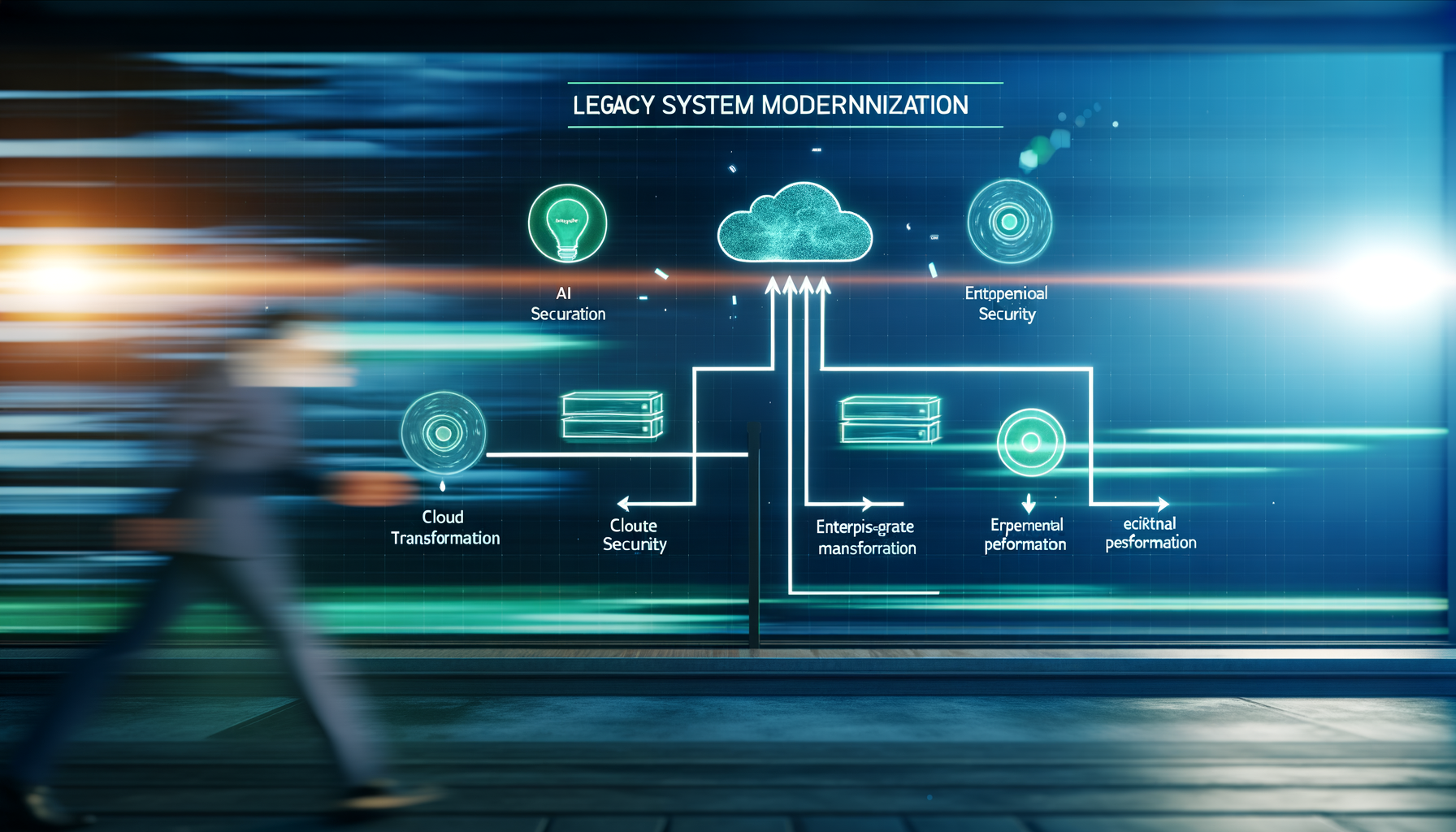
Diagram showing steps in cloud migration process.
Migrating to the cloud is a critical step in modernizing legacy systems. It offers unparalleled flexibility, scalability, and cost-effectiveness.
A successful cloud migration strategy involves several key steps: selecting the right cloud model (public, private, hybrid), ensuring data security and compliance, and optimizing costs through effective resource management.
Quicklook’s expertise in cloud migration ensures that businesses can transition smoothly, minimizing risks and maximizing benefits. Our tailored strategies address unique business needs, ensuring a seamless shift.
LIST
- •Select Cloud Model
- •Ensure Data Security
- •Optimize Costs
Success Stories: From Struggle to Surge
Real-World Transformations
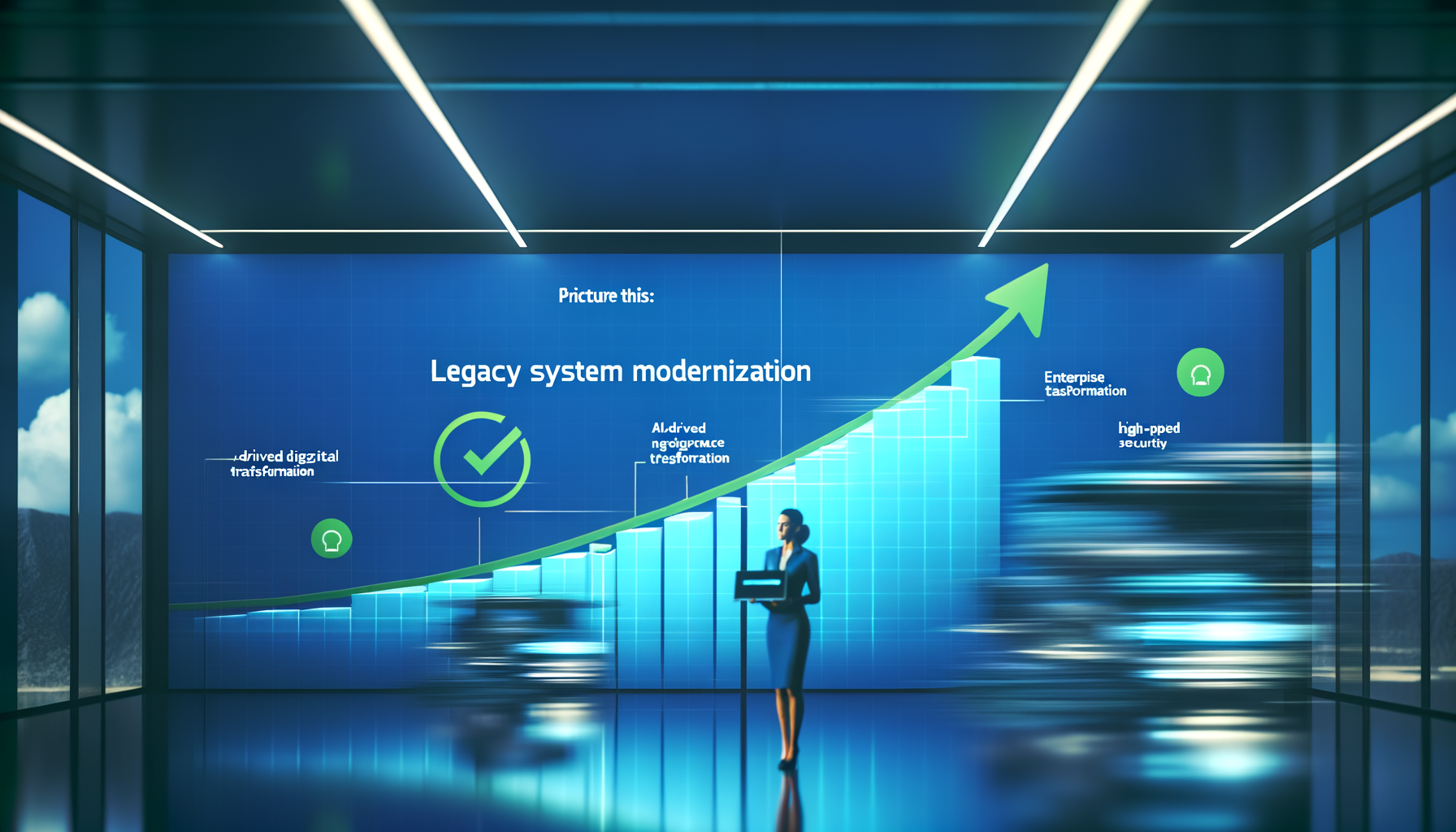
Up-trending analytics graph showcasing successful modernization results.
Consider a Pacific Northwest retailer that struggled with outdated inventory systems. By partnering with Quicklook, they transitioned to a cloud-based, AI-driven solution that improved accuracy by 40% and reduced operational costs by 25%.
Another success story involves a healthcare provider that modernized its patient management system, enhancing data security and compliance while reducing processing times by 50%.
These transformations are not just upgrades; they are strategic overhauls that position businesses for future success, proving that modernization is a key driver of growth.
CALLOUT
Modernization is a strategic overhaul that drives growth and secures competitive advantage.
Frequently Asked Questions
QWhat are the key trends in legacy application modernization for 2025?
QHow can AI and machine learning accelerate legacy system modernization?
QWhat role does cloud migration play in updating legacy applications?
Conclusion
Legacy modernization is essential for staying competitive in today’s fast-paced digital landscape. By adopting strategic frameworks, leveraging AI, and embracing cloud solutions, businesses can achieve significant improvements in performance and efficiency.
Future Vision
The future belongs to those who prepare for it today. Ensure your business is ready with a robust modernization strategy.
Schedule your AI audit with Quicklook.
